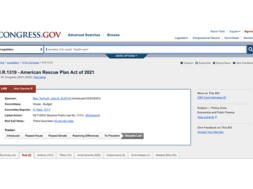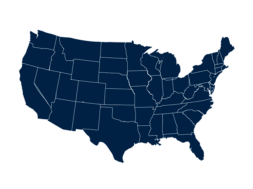
Evaluating Your GE Completers List: A Practical Approach
By Aaron Lacey, Thompson Coburn LLP
As many postsecondary administrators are aware, on June 1, 2016, the U.S. Department of Education for the first time provided institutions with their Draft GE Completers Lists. Specifically, for each gainful employment (“GE”) program that postsecondary institutions offer, the Department provided a list of graduates who it believes completed the GE program during the applicable cohort period (as specified under the law). The Department will use the debt and earnings information for these groups of graduates to calculate the “debt-to-earnings rates” for the institutions’ GE programs. Those rates, in turn, will impact whether students in the schools’ GE programs may continue to access federal financial aid in the future.
The Department provided institutions with the Draft GE Completers Lists so that they may review the data for accuracy, and where errors are identified, make corrections. In the days before and after the release of the lists, the Department also made a range of guidance and resources available to assist institutions in carrying out this task, to include multiple electronic announcements, webinars, charts, spreadsheets, viewer tools, and an updated version of the NSLDS GE User Guide, which includes two new chapters focused entirely on GE Completers List evaluation. Schools have 45 days to submit corrections to the information included in the Draft GE Completers Lists, with all submissions due no later than July 28, 2016.
The Department, school and trade associations, and institutions are all in agreement that it is extremely important that schools review this data to ensure that it is complete and correct.
Reviewing the data, however, is much easier said than done. We have spoken to a handful of large institutions with dedicated compliance and information technology staff, and they have managed to develop processes permitting them to reconcile the Department’s data against the data in their own systems. They are effectively identifying errors and preparing to submit corrections, but it has been a time-consuming and, at times, challenging process.
For the many small and mid-sized institutions that operate with a lean administrative staff and lack an in-house data analyst, accessing and reviewing the Draft Completers Lists remains a daunting task.
For such institutions, the Department’s guidance, however thorough, can be of limited use. After all, a detailed discussion regarding the contents and layout of the record types in a fixed-width flat file is not helpful if the reader has never heard of a fixed-width flat file in the first place. And even where an institution may have an individual on staff with the technical expertise necessary to access and analyze the data, the question remains whether the individual will have any familiarity with the gainful employment rules, or otherwise have any sense as to what, exactly, should be reviewed.
With this in mind, we offer the thoughts below regarding how a small or mid-sized institution with limited resources might go about reviewing its Draft Completers Lists. Optimally, a school would attempt to reconcile every data point that the Department has pushed out against the data in its own systems. But where an institution is unable to manage a comprehensive examination of this sort, the following approach may assist to spot significant errors, and to focus efforts where it counts.
Step one: enable the viewer tool. As a threshold matter, institutions must retrieve their Draft Completers List data and find a way to view it – there is really no way around this step. Of the options the Department has made available, the easiest is to use the GE Completers List Viewer Tool. The Viewer Tool is essentially a software program that schools download onto their local computer. Once downloaded, it allows institutions to review certain elements of their Completers List data through a user-friendly interface that can display the data by program or by student, allowing schools to view a set of students based on selected criteria. It also enables schools to view the exclusions, if any, that apply to a student. Instructions for downloading the Viewer Tool and importing Completers List data into the Tool are detailed in Gainful Employment Electronic Announcement #79 – GE Completers List Viewer Tool and Import Tool Now Available. The Department also discussed the Viewer Tool in the second-half of its webinar Reading Your Draft GE Completers List Files, which was offered in early June and is expected to be available on-demand at https://ifap.ed.gov/ifap/ifapMedia.jsp?#GECompletersListWebinar060216
Step two: reconcile against internal data. Though institutions may not have the time or resources necessary to reconcile every piece of data associated with the graduates included on the Draft Completers Lists, institutions should attempt to at least verify the group of individuals on each list with their own internal list.
For each GE program, we suggest that schools produce from their current, internal records, the list of completers they believe should be in the cohort for each GE program, then reconcile their list against the Draft Completers List data provided by the Department.
If any inconsistencies are discovered, the school should attempt to determine the cause. It could be that the school erred when reporting data last fall, or that the Department made a mistake.
Step three: pressure check exclusions. There are a number of reasons that a graduate of a GE program might be excluded from the Draft Completers List for a GE program, to include:
- The student did not receive any Title IV funds (loans or grants).
- The student did not complete the program during the applicable cohort period.
- One or more of the student’s Title IV loans were in a military-related deferment status during calendar year 2014.
- One or more of the student’s Title IV loans are under consideration by ED, or have been approved, for a discharge on the basis of student’s total and permanent disability.
- The student was enrolled in another Title IV eligible program at the institution or at another institution during calendar year 2014.
- The student subsequently completed a higher credentialed GE program at the same institution, and prior to June 30, 2015.
- The student died.
As noted earlier, the Viewer Tool enables schools to view the exclusions, if any, that apply to a student. In addition, where an exclusion applies, the Viewer Tool indicates the data the Department used to make the determination (e.g., NSLDS records indicating military deferment status). We suggest that institutions unable to check every exclusion nonetheless take a sample of students in each exclusion category and confirm that based on records in NSLDS, and the institution’s internal records, the exclusions have been properly applied. Schools should also examine the chart titled Gainful Employment Completers List – Exclusions and Inclusions, which the Department included with Gainful Employment Electronic Announcement #78 – Draft GE Completers List Files. The chart discusses the exclusion categories above, as well as the types of documentation the Department will and will not consider in support of a claimed exclusion.
We also strongly encourage schools to focus on programs where the 2-year and 4-year graduate totals are near 30. For these programs, one or two exclusion corrections could make a significant difference in the debt-to-earnings calculation. If a 2-year cohort has 31 graduates, for example, and the school identifies two additional exclusions, then the Department will no longer use the 2-year cohort for purposes of calculating the debt-to-earnings rates. Instead, per the regulations, it will use an expanded 4-year cohort (so as to ensure it has more than 30 graduates in the calculation). This could prove significant for the institution if students in the expanded 4-year cohort took on less debt when in school (assuming the program cost less to attend in former years). Moreover, individuals who graduated in 2008 have been in the workforce for a longer period and may be earning a higher salary by 2014 (the year for which earnings data are being examined). If a 4-year cohort has 31 graduates, and the school identifies two additional exclusions (so that the total cohort drops below 30 graduates), then the Department will no longer calculate debt-to-earnings rates for the program for AY 14-15. Referred to as a “no result,” this could buy an institution critical time to implement changes needed to bring a program into compliance.
Step four: pressure check debt and cost information. The Draft Completers List files include for each student the private education loan and tuition and fees information that the institution reported to the Department last fall. Unfortunately, institutions are not able to view this data in the Viewer Tool. It can be accessed, however, using the GE Completers List Import Tool, a Microsoft Excel spreadsheet that the Department has created and that can be used to review the Completers List files as nine distinct worksheets in a separate Excel workbook. For each GE program, one of the worksheets, the Gainful Employment Completers List Program GE Record, includes the aforementioned debt and cost information. Institutions that are able to view their data using the Import Tool can use simple filter and sort functions to verify that the reported loan and tuition and fee amounts, as a general matter, do not exceed reasonable thresholds. Though this falls short of verifying the data for each individual student, it does reduce the likelihood of a significant error occurring across an entire cohort.
One school, for example, discovered that when it reported private loan debt information for graduates of one GE program last fall, an error occurred with the position of the decimal, with the result that the average debt was $120,000 instead of $12,000. A quick review of the debt and cost information caught the mistake.
Step five: remediate prior reporting errors. Finally, if institutions are already aware that a reporting error occurred last fall for one or more students, they should correct the data error at this time. Such errors might include any aspect of the student and program information previously provided to the Department (e.g., student identity, CIP code, credential level, dates of enrollment, enrollment status, debt, tuition and fees). The Department has indicated that all such errors still may be addressed with one exception: the Department has stated that it will not permit an institution to report an entire program that previously was omitted.
In recent days, we have discussed the review of the Draft Completers Lists with a number of institutions. Generally, the data provided by the Department is thought to be accurate, and most inconsistencies have been minor and readily explained (e.g., SSN or DOB discrepancies). But more significant errors also have been identified. Accordingly, we encourage schools to make some effort to review the data. Finally, if schools do find errors that need to be addressed, they can find instruction on how to submit corrections through NSLDS in the most recent version of the NSLDS GE User Guide, and in the Department’s webinar, Submitting GE Completers List Corrections, which was offered in mid-June, and is available on-demand at https://ifap.ed.gov/ifap/ifapMedia.jsp?#GECompletersListWebinar060216
AARON LACEY, is a partner in Thompson Coburn’s higher education practice, and editorial director of REGucation, the firm’s higher education law and policy blog. Aaron advises clients on the wide range of federal, state, and accrediting agency laws and standards that govern postsecondary institutions, including the Title IV federal financial aid programs. He also represents institutions in administrative proceedings before state agencies, accreditors, and the U.S. Department of Education, and guides clients through postsecondary transactions, contract negotiation, policy creation, and compliance systems design. You can find Aaron on Twitter (@HigherEdCounsel) and LinkedIn, and reach him at (314) 552-6405 or alacey@thompsoncoburn.com.
Contact Information: Aaron Lacey // Thompson Coburn LLC // 314-552-6405 // alacey@thompsoncoburn.com










